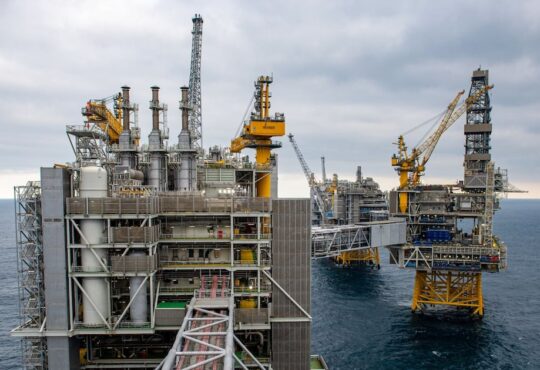
- Europe has diversified crude oil sources, albeit at a higher cost
- Saudi Arabia and the U.S. have become more important crude oil suppliers
- Russian-made diesel imports have also dropped significantly, with Saudis filling the gap
I have previously addressed how the sanctions on Russian crude oil and Russian petroleum products are changing oil markets here and here. These analyses have mostly focused on the new markets that Russia has opened for its oil exports.
Today’s column will examine how Europe’s oil imports have changed since the sanctions and some of the potential geopolitical implications of this. Traders should be aware of how crude oil and diesel flows are shifting and how markets are reacting to these changes.
In 2021, one-quarter of the EU’s oil imports came from Russia. This included both seaborne imports and imports via the Druzhba pipeline. 10% came from Norway, 9% from the United States, 8% from Kazakhstan, 8% from Libya, 7% from Iraq, and 5% from Saudi Arabia and the United Kingdom. The remaining 16% came from a variety of other producers in increments smaller than 5%.
Since sanctions were implemented, the EU has diversified its sources of oil significantly. In the third quarter of 2022, Russia only supplied 15% of Europe’s crude oil needs. Notably, imports from the U.S. increased to 12%, and Saudi Arabian oil increased to 9%. Most other imports remained about the same, although the “others” category increased to 24%.
Although Europe’s sources of crude oil are now more diverse, which is beneficial for energy security, they come from much farther away. This makes the oil more expensive for European importers.
The United States and Saudi Arabia have become more significant players in Europe’s crude oil market, making Europe more vulnerable to shifts in U.S. drilling and energy policy and more vulnerable to changes in OPEC policy. U.S. supply could decline in 2023 because U.S. crude oil exports in 2021 were buoyed by releases from the Strategic Petroleum Reserve (SPR).
Additional releases are unlikely at this point. The only way Europe may be able to increase its imports from the U.S. is if a bill proposed by Senator Marco Rubio to ban U.S. oil exports to China is voted and signed into law. Right now, this doesn’t seem likely, but if U.S. sentiment against China continues to grow, the potential to ban oil exports to China also grows.
Because U.S. oil exports to Europe have risen, U.S. oil exports to Canada have declined . Canada used to be the top destination for U.S. oil exports since 2015, when the oil export ban was lifted. Now, Canada has dropped to 4th place.
This isn’t necessarily a negative development, but geopolitical relationships can also change whenever trade balances shift. Europe is now more vulnerable to political and military concerns in the Middle East and is now more dependent on the U.S. for crude oil.
Get The App
Join the millions of people who stay on top of global financial markets with Investing.com.
Download Now
When it comes to diesel, European imports of Russian-made diesel have dropped significantly since sanctions were implemented in 2023. In 2021, Russian diesel made up 27% of European diesel imports.
It has now dropped to 2%. Imports of diesel from Saudi Arabia have increased tremendously to fill the gap from Russia. Imports of Saudi diesel to northwest Europe increased to 202,000 bpd in February 2023. Imports from China and South Korea, which had previously not supplied much diesel to Europe, also grew, as did imports from India.
It is highly likely that the crude oil used to produce this diesel probably originated in Russia as Saudi Arabia, UAE, China, India, Indonesia, and Turkey are all importing Russian crude oil and refining it into products that they are subsequently selling to Europe and other countries that are no longer buying Russian crude oil.
This is acceptable according to the sanctions policy, and traders can expect this industry – refining Russian oil for sale to Europe and the U.S. – to grow since it does not appear that the sanctions on Russia will be removed in the near future.
***
Disclosure: The author currently does not own any of the securities mentioned in this article.
Written By:
Ellen Wald






